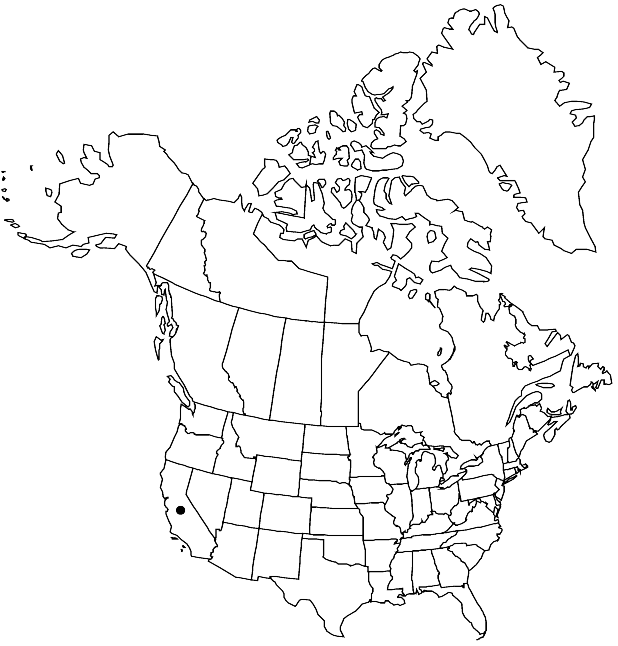Difference between revisions of "Caulanthus flavescens"
Ann. Missouri Bot. Gard. 9: 301. 1923.
FNA>Volume Importer |
imported>Volume Importer |
||
| (4 intermediate revisions by 2 users not shown) | |||
| Line 6: | Line 6: | ||
|place=9: 301. 1923 | |place=9: 301. 1923 | ||
|year=1923 | |year=1923 | ||
| + | }} | ||
| + | |special_status={{Treatment/ID/Special_status | ||
| + | |code=E | ||
| + | |label=Endemic | ||
| + | }}{{Treatment/ID/Special_status | ||
| + | |code=C | ||
| + | |label=Conservation concern | ||
}} | }} | ||
|basionyms={{Treatment/ID/Basionym | |basionyms={{Treatment/ID/Basionym | ||
|name=Streptanthus flavescens | |name=Streptanthus flavescens | ||
|authority=Hooker | |authority=Hooker | ||
| + | |rank=species | ||
|publication_title=Icon. Pl. | |publication_title=Icon. Pl. | ||
|publication_place=1: plate 44. 1837 | |publication_place=1: plate 44. 1837 | ||
| Line 16: | Line 24: | ||
|name=Caulanthus procerus | |name=Caulanthus procerus | ||
|authority=(Brewer ex A. Gray) S. Watson | |authority=(Brewer ex A. Gray) S. Watson | ||
| + | |rank=species | ||
}} {{Treatment/ID/Synonym | }} {{Treatment/ID/Synonym | ||
|name=Guillenia flavescens | |name=Guillenia flavescens | ||
|authority=(Hooker) Greene | |authority=(Hooker) Greene | ||
| + | |rank=species | ||
}} {{Treatment/ID/Synonym | }} {{Treatment/ID/Synonym | ||
|name=Guillenia hookeri | |name=Guillenia hookeri | ||
|authority=(Greene) Greene | |authority=(Greene) Greene | ||
| + | |rank=species | ||
}} {{Treatment/ID/Synonym | }} {{Treatment/ID/Synonym | ||
|name=Streptanthus dudleyi | |name=Streptanthus dudleyi | ||
|authority=Eastwood | |authority=Eastwood | ||
| + | |rank=species | ||
}} {{Treatment/ID/Synonym | }} {{Treatment/ID/Synonym | ||
|name=Streptanthus lilacinus | |name=Streptanthus lilacinus | ||
|authority=Hoover | |authority=Hoover | ||
| + | |rank=species | ||
}} {{Treatment/ID/Synonym | }} {{Treatment/ID/Synonym | ||
|name=Streptanthus procerus | |name=Streptanthus procerus | ||
|authority=Brewer ex A. Gray | |authority=Brewer ex A. Gray | ||
| + | |rank=species | ||
}} {{Treatment/ID/Synonym | }} {{Treatment/ID/Synonym | ||
|name=Thelypodium flavescens | |name=Thelypodium flavescens | ||
|authority=S. Watson | |authority=S. Watson | ||
| + | |rank=species | ||
}} {{Treatment/ID/Synonym | }} {{Treatment/ID/Synonym | ||
|name=Thelypodium greenei | |name=Thelypodium greenei | ||
|authority=Jepson | |authority=Jepson | ||
| + | |rank=species | ||
}} {{Treatment/ID/Synonym | }} {{Treatment/ID/Synonym | ||
|name=Thelypodium hookeri | |name=Thelypodium hookeri | ||
|authority=Greene | |authority=Greene | ||
| + | |rank=species | ||
}} | }} | ||
|hierarchy=Brassicaceae;Brassicaceae tribe Thelypodieae;Caulanthus;Caulanthus flavescens | |hierarchy=Brassicaceae;Brassicaceae tribe Thelypodieae;Caulanthus;Caulanthus flavescens | ||
| Line 65: | Line 82: | ||
-->{{#Taxon: | -->{{#Taxon: | ||
name=Caulanthus flavescens | name=Caulanthus flavescens | ||
| − | |||
|authority=(Hooker) Payson | |authority=(Hooker) Payson | ||
|rank=species | |rank=species | ||
| Line 79: | Line 95: | ||
|publication title=Ann. Missouri Bot. Gard. | |publication title=Ann. Missouri Bot. Gard. | ||
|publication year=1923 | |publication year=1923 | ||
| − | |special status= | + | |special status=Endemic;Conservation concern |
| − | |source xml=https:// | + | |source xml=https://bitbucket.org/aafc-mbb/fna-data-curation/src/2e0870ddd59836b60bcf96646a41e87ea5a5943a/coarse_grained_fna_xml/V7/V7_1169.xml |
|tribe=Brassicaceae tribe Thelypodieae | |tribe=Brassicaceae tribe Thelypodieae | ||
|genus=Caulanthus | |genus=Caulanthus | ||
Latest revision as of 22:30, 5 November 2020
Annuals; (not glaucous), glabrous or sparsely to moderately hirsute. Stems erect, unbranched or branched distally, 1.7–12 dm, usually hirsute basally. Basal leaves soon withered; blade lyrate, margins sinuate-pinnatifid. Cauline leaves petiolate (median 0.3–2 cm) or (distal) sessile; blade lanceolate to oblong or oblanceolate, 2–13.5 cm × 3–35 mm (smaller distally, base sometimes subauriculate), margins dentate. Racemes without a terminal cluster of sterile flowers, (considerably elongated in fruit). Fruiting pedicels ascending to strongly reflexed, (slender or thickened), 4.5–8 mm, glabrous or sparsely pubescent. Flowers: sepals usually erect, rarely ascending to spreading, oblong, 6–9 × 1.5–2 mm, (not saccate or urceolate); petals (erect), usually white to creamy white, rarely pinkish, (narrowly lanceolate), 7–13 mm, blade 3–5 × 1–1.5 mm, channeled, crisped, claw linear-oblanceolate, 4–8 × 1–1.7 mm; filaments tetradynamous, (erect), median pairs 5–7 mm, lateral pair 3–5 mm; anthers narrowly oblong, equal, 1.5–2.5 mm. Fruits erect, (straight), terete, 3.8–7.7 cm × 1.4–2 mm; valves each with obscure midvein, (glabrous or sparsely pubescent); ovules 44–58 per ovary; style 1–3.5 mm; stigma subentire. Seeds (brown), 1.3–1.8 × 0.9–1.2 mm. 2n = 28.
Phenology: Flowering Mar–May.
Habitat: Serpentine grounds, roadsides, gumbo clay slopes, open hillsides, grassy fields
Elevation: 100-800 m
Discussion
Of conservation concern.
Caulanthus flavescens is distributed primarily from Monterey and San Benito counties north to Napa and San Joaquin counties.
Selected References
None.
